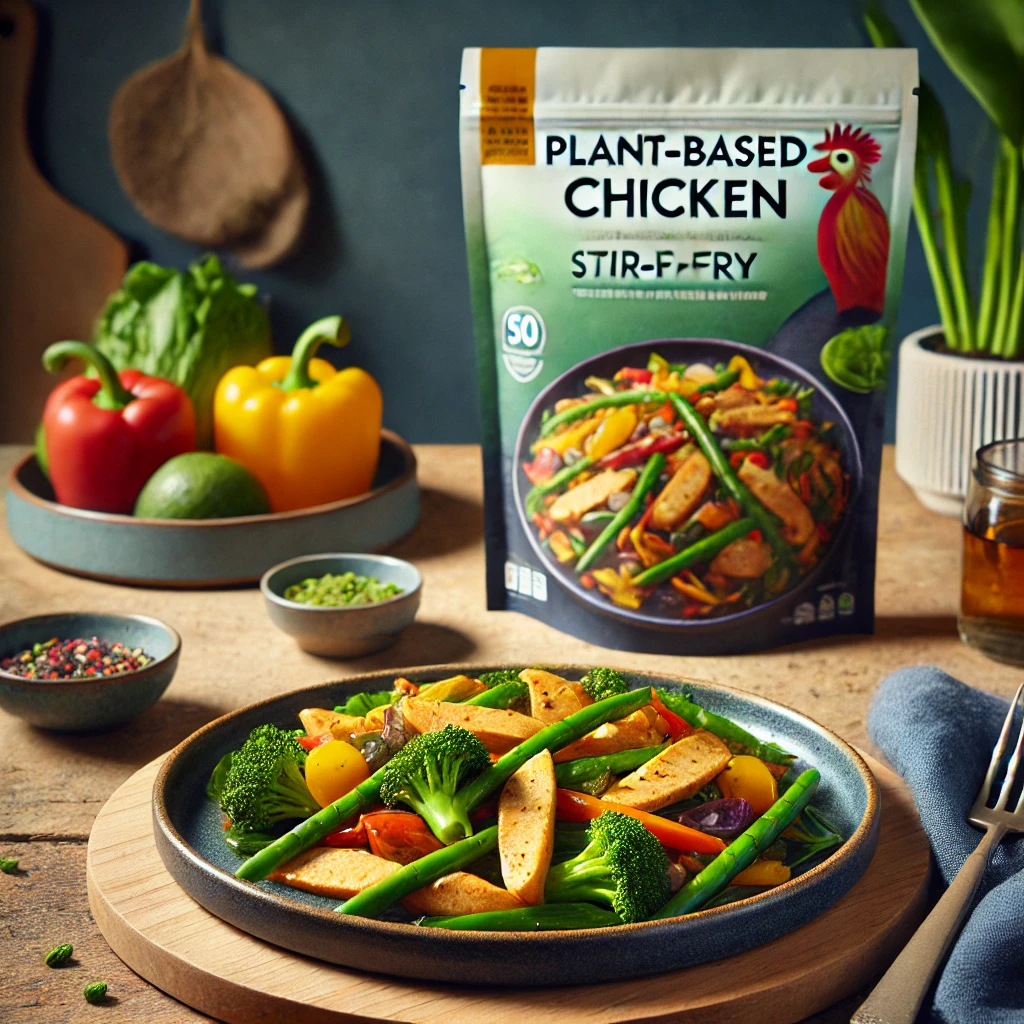
In recent years, plant-based diets have moved from the fringes of the food industry into the mainstream, particularly in the United States. As more Americans become conscious of their health, the environment, and animal welfare, plant-based alternatives to meat are gaining traction. Among these, plant-based chicken has emerged as a popular and sustainable choice for those looking to reduce their meat consumption without compromising on taste or texture.
This blog post will explore the benefits of plant-based chicken, how it can be incorporated into your diet, and why it’s becoming a staple in American homes. We’ll also highlight affiliate products that can help you make the most of plant-based chicken in your cooking and introduce our free guide, “The Global Healthy Eating Guide: Flexitarian Meals, Superfoods, and Fusion Recipes,” to further inspire your journey toward a healthier, more sustainable lifestyle.
Why Plant-Based Chicken Is Gaining Popularity

Health Benefits
One of the primary reasons for the rise of plant-based chicken is the growing awareness of the health benefits associated with plant-based diets. Traditional chicken, while a good source of protein, also contains cholesterol and saturated fats, which can contribute to heart disease and other health issues when consumed in excess.
Plant-based chicken, on the other hand, is typically made from ingredients like soy, pea protein, or wheat gluten, which are low in saturated fat and contain no cholesterol. Additionally, plant-based chicken products often come fortified with vitamins and minerals like B12, iron, and calcium, which are essential for a balanced diet.
Key Health Benefits of Plant-Based Chicken:
- Lower in Saturated Fat: Reduces the risk of heart disease.
- No Cholesterol: Supports cardiovascular health.
- Rich in Protein: Provides a comparable amount of protein to traditional chicken.
- Fortified Nutrients: Often includes essential vitamins and minerals.
Environmental Impact
The environmental impact of traditional meat production is significant. Livestock farming is a leading contributor to greenhouse gas emissions, deforestation, and water use. According to the United Nations, the livestock sector is responsible for approximately 14.5% of global greenhouse gas emissions. Plant-based chicken offers a more sustainable alternative, with a much lower environmental footprint.
Producing plant-based chicken requires fewer natural resources—such as land and water—and generates significantly fewer greenhouse gas emissions compared to raising chickens for meat. This makes plant-based chicken an attractive option for those looking to reduce their environmental impact while still enjoying their favorite foods.
Environmental Advantages of Plant-Based Chicken:
- Lower Greenhouse Gas Emissions: Significantly reduces the carbon footprint.
- Less Water Usage: Requires far less water than animal agriculture.
- Sustainable Resource Use: Uses fewer natural resources, helping to preserve the environment.
Animal Welfare
Another driving factor behind the rise of plant-based chicken is the concern for animal welfare. Industrial farming practices often involve overcrowding, poor living conditions, and inhumane treatment of animals. By choosing plant-based alternatives, consumers can enjoy their favorite dishes without contributing to these practices.
Free Guide: For more insights into plant-based eating and how to make the transition, download our free guide, “The Global Healthy Eating Guide: Flexitarian Meals, Superfoods, and Fusion Recipes.” This comprehensive guide offers a variety of plant-based recipes, tips for incorporating superfoods, and a 7-day meal plan to help you get started. Download your free guide today!
Cooking with Plant-Based Chicken: Tips and Recipes

Choosing the Right Plant-Based Chicken
When it comes to plant-based chicken, there are several brands and products available, each with its unique texture and flavor profile. Popular options include products made from soy, pea protein, and wheat gluten. When choosing a plant-based chicken product, consider factors such as:
- Texture: Some plant-based chicken products are designed to mimic the texture of grilled or fried chicken, while others are more similar to shredded chicken.
- Flavor: Many plant-based chicken options come pre-seasoned, while others are plain and can be flavored according to your preference.
- Nutritional Content: Look for products that are high in protein and low in saturated fat, and check for added vitamins and minerals.
Affiliate Products:
To enhance your plant-based cooking experience, consider these essential kitchen tools:
- Cast Iron Skillet: Perfect for achieving a crispy, golden-brown crust on your plant-based chicken.
- Non-Stick Grill Pan: Ideal for grilling plant-based chicken without the need for excessive oil.
Easy Plant-Based Chicken Recipes
Here are a few simple recipes to help you incorporate plant-based chicken into your meals:
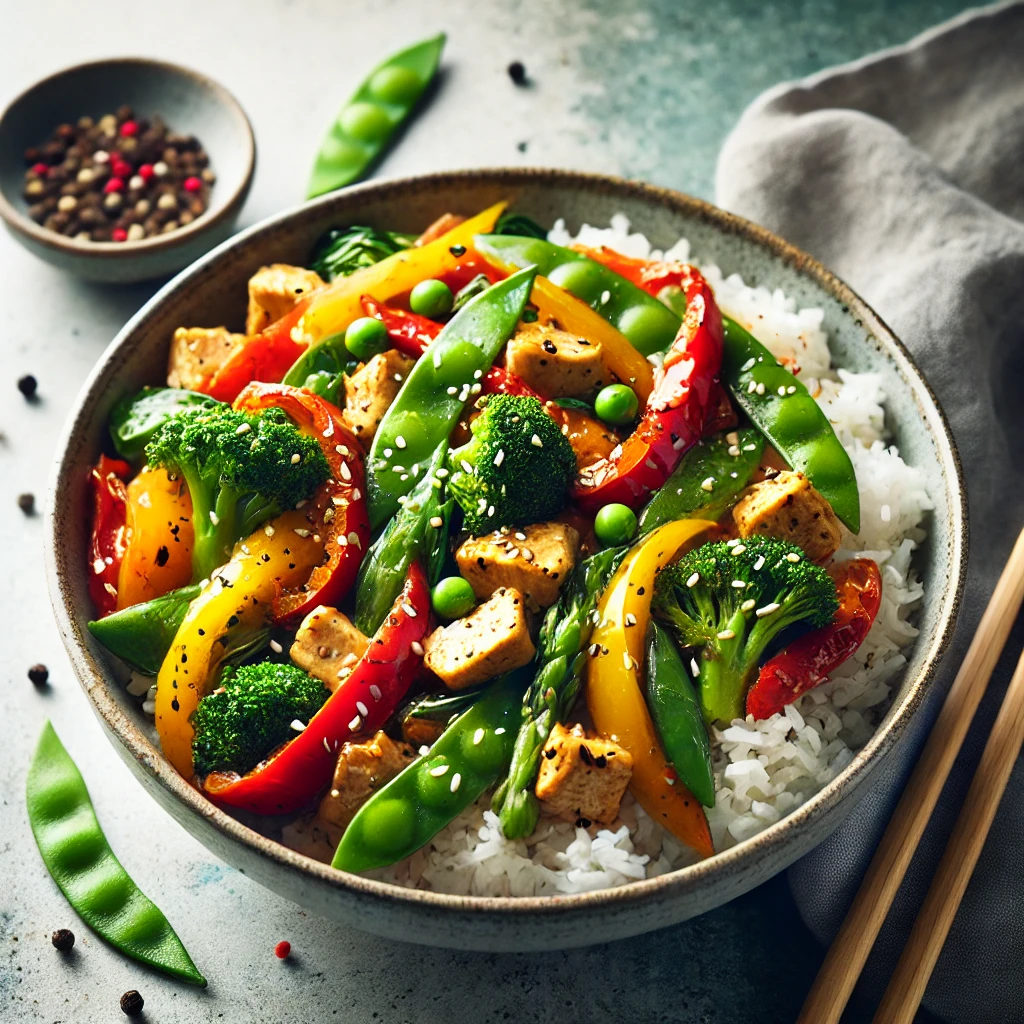
1. Plant-Based Chicken Stir-Fry
Ingredients:
- 1 package of plant-based chicken strips
- 1 red bell pepper, sliced
- 1 broccoli head, cut into florets
- 2 tablespoons soy sauce
- 1 tablespoon sesame oil
Instructions:
- Heat the Oil: In a large pan or wok, heat the sesame oil over medium heat.
- Cook the Vegetables: Add the red bell pepper and broccoli, and stir-fry until they begin to soften.
- Add the Plant-Based Chicken: Toss in the plant-based chicken strips and stir-fry for another 5-7 minutes until heated through.
- Season and Serve: Add the soy sauce, stir to combine, and serve over rice or noodles.
Affiliate Product:
- Wok Pan: A high-quality wok is essential for stir-frying vegetables and plant-based chicken to perfection.
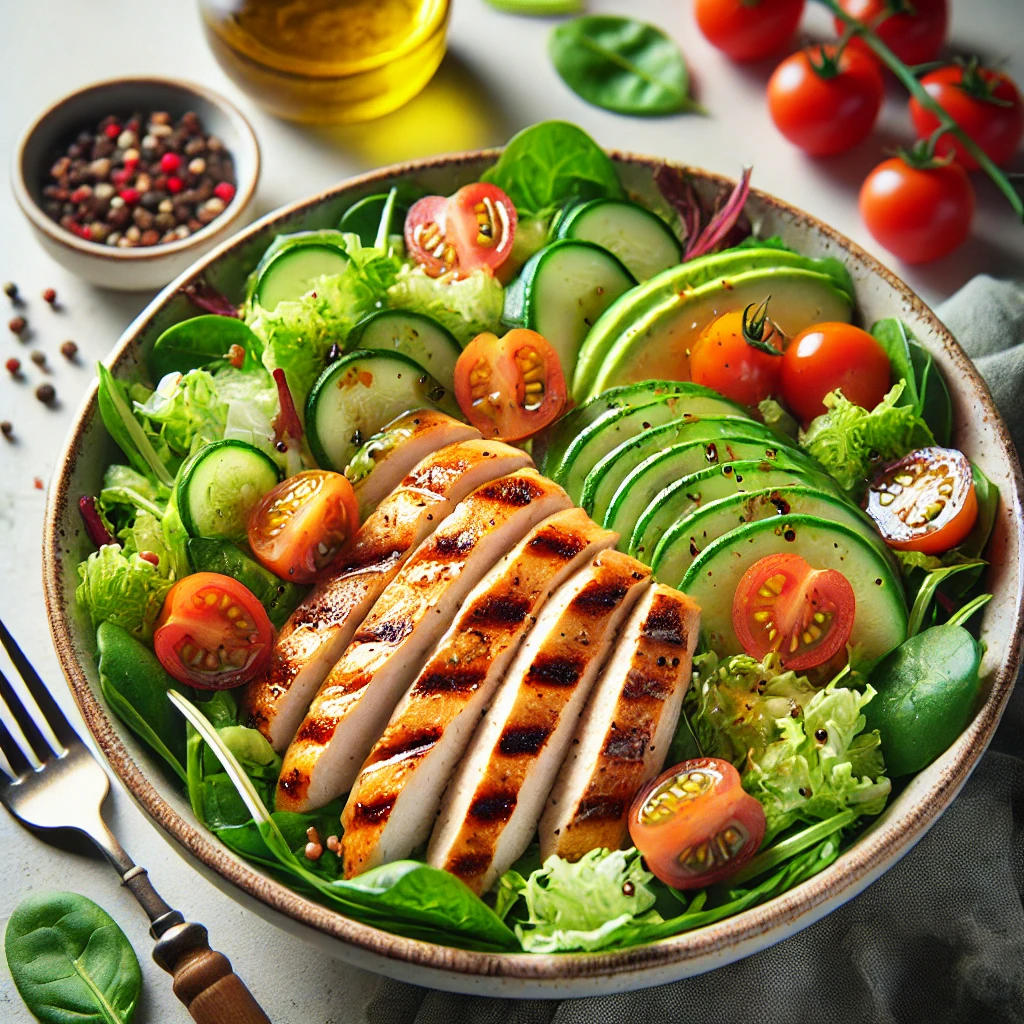
2. Grilled Plant-Based Chicken Salad
Ingredients:
- 2 plant-based chicken breasts
- 4 cups mixed greens
- 1 avocado, sliced
- 1/2 cup cherry tomatoes, halved
- Balsamic vinaigrette dressing
Instructions:
- Grill the Plant-Based Chicken: Preheat a grill pan and cook the plant-based chicken breasts until grill marks appear and the chicken is heated through.
- Assemble the Salad: In a large bowl, combine the mixed greens, avocado, and cherry tomatoes.
- Top with Chicken: Slice the grilled plant-based chicken and add it to the salad.
- Dress and Serve: Drizzle with balsamic vinaigrette and serve immediately.
Affiliate Product:
- Salad Spinner: Ensure your greens are crisp and dry with this easy-to-use salad spinner.
Cooking Tips for Plant-Based Chicken
- Season Well: While plant-based chicken can mimic the texture of real chicken, it often requires additional seasoning to enhance its flavor. Use spices, marinades, and sauces generously.
- Don’t Overcook: Plant-based chicken can become tough if overcooked. Cook it just until heated through to maintain its texture.
- Pair with Bold Flavors: Plant-based chicken pairs well with bold, flavorful ingredients like garlic, ginger, soy sauce, and lemon. Experiment with different combinations to find your favorite.
Free Guide Promotion: For more delicious plant-based recipes and cooking tips, download our free guide, “The Global Healthy Eating Guide: Flexitarian Meals, Superfoods, and Fusion Recipes.” This guide is packed with meal ideas, nutritional advice, and a 7-day meal plan designed to help you embrace a healthier, plant-based lifestyle. Download your free guide now!
The Role of Plant-Based Chicken in a Sustainable Diet
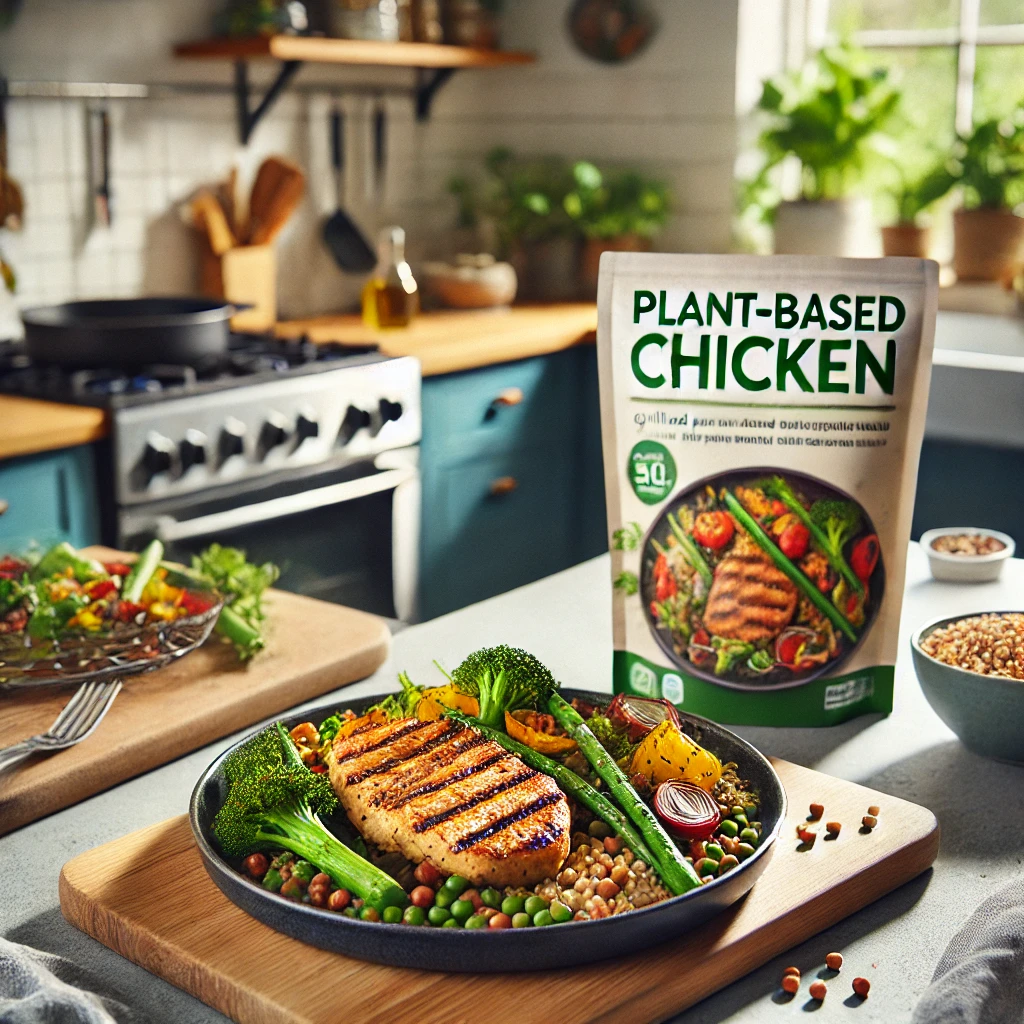
Reducing Your Carbon Footprint
One of the most compelling reasons to incorporate plant-based chicken into your diet is its positive impact on the environment. The production of plant-based foods generally requires fewer resources than traditional meat, leading to lower carbon emissions, reduced water usage, and less strain on the environment.
By replacing even a portion of your meat consumption with plant-based alternatives, you can significantly reduce your personal carbon footprint. This is an easy and effective way to contribute to the fight against climate change.
Supporting Ethical Food Choices
Choosing plant-based chicken also aligns with ethical considerations regarding animal welfare. Many people are concerned about the conditions in which animals are raised for food, including issues like overcrowding, lack of access to natural environments, and inhumane treatment. By opting for plant-based alternatives, you can enjoy your favorite dishes without contributing to these practices.
Promoting a Healthier Planet
The environmental benefits of plant-based diets extend beyond just reducing greenhouse gas emissions. By consuming more plant-based foods, you also help conserve water, reduce deforestation, and promote biodiversity. As more people make the switch to plant-based options, the cumulative effect can lead to significant positive changes for the planet.
Affiliate Product Promotion: Sustainable Kitchen Tools
To further support your sustainable lifestyle, consider these eco-friendly kitchen products:
- Reusable Silicone Food Storage Bags: Replace single-use plastic bags with these durable, reusable silicone bags for food storage.
- Bamboo Cutting Board: A sustainable, biodegradable cutting board that’s perfect for all your kitchen prep work.
Plant-Based Chicken in American Homes: A Growing Trend

Consumer Demand for Plant-Based Options
In the United States, the demand for plant-based foods has been steadily increasing. More consumers are looking for meat alternatives that allow them to enjoy familiar flavors while aligning with their health, environmental, and ethical values. The plant-based food market has grown by double digits over the past few years, with plant-based chicken being one of the most sought-after products.
Several factors contribute to this rising trend:
- Health Consciousness: As more studies link excessive meat consumption with chronic health conditions, Americans are seeking healthier alternatives. Plant-based chicken offers a way to enjoy high-protein meals without the associated risks of cholesterol and saturated fats.
- Environmental Awareness: Climate change and environmental degradation are major concerns for many people today. Opting for plant-based foods is an easy and effective way for consumers to reduce their environmental impact.
- Taste and Convenience: Modern plant-based chicken products are designed to closely mimic the taste and texture of traditional chicken. These products are also convenient, available in various forms like nuggets, patties, and strips, making them easy to prepare and integrate into favorite recipes.
The Role of Grocery Stores and Restaurants
The availability of plant-based chicken in grocery stores and restaurants has made it easier for Americans to incorporate it into their diets. Many major supermarket chains now offer a variety of plant-based chicken products, often alongside traditional meat products, making it convenient for consumers to pick up both options.
Additionally, numerous restaurants have added plant-based chicken dishes to their menus, recognizing the growing demand for these alternatives. Fast-food chains, in particular, have been quick to adopt plant-based chicken, offering it in sandwiches, salads, and as standalone entrees.
Free Guide: To explore more plant-based meal options and learn how to integrate them into your diet, download our free guide, “The Global Healthy Eating Guide: Flexitarian Meals, Superfoods, and Fusion Recipes.” This guide includes a variety of easy-to-make, nutritious recipes that highlight the benefits of plant-based eating. Download your free guide now!
Exploring the Nutritional Value of Plant-Based Chicken
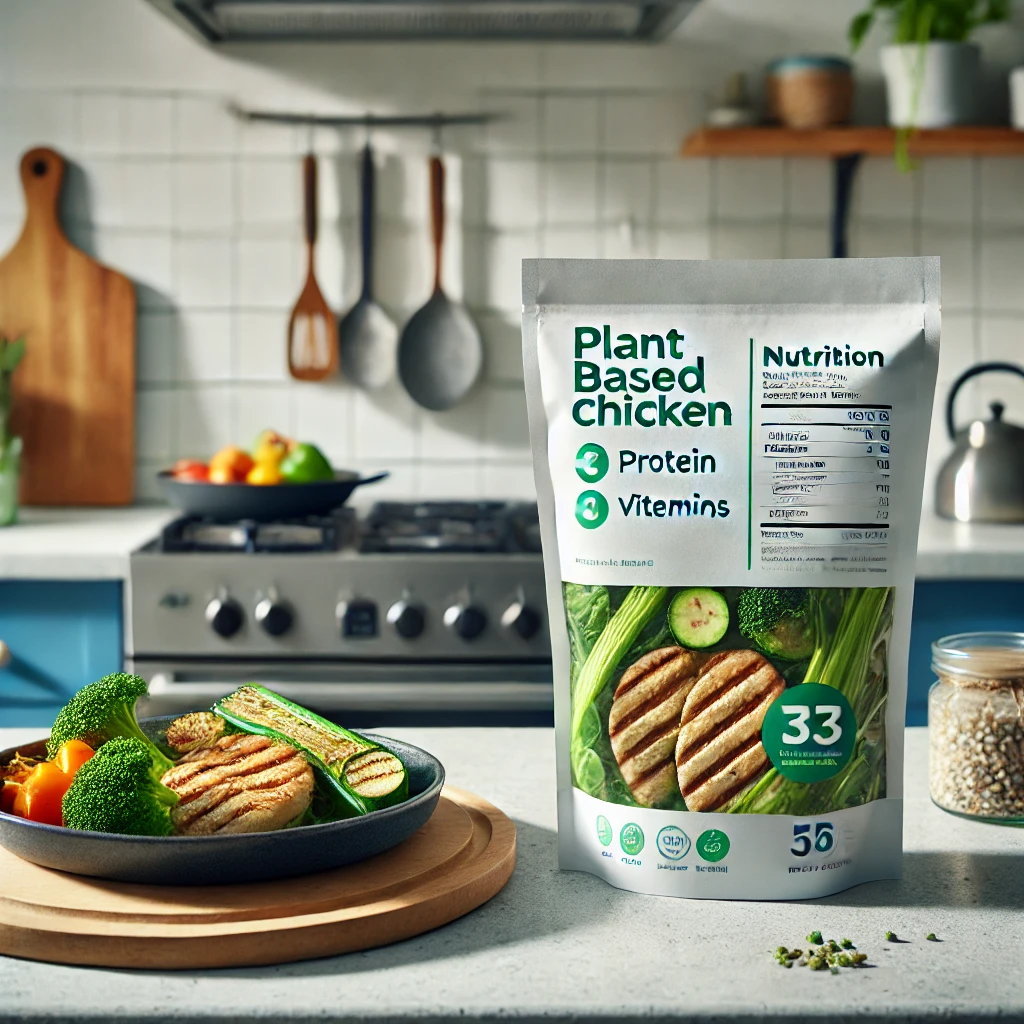
Comparing Plant-Based Chicken to Traditional Chicken
When comparing the nutritional profiles of plant-based chicken and traditional chicken, there are several key differences to consider:
- Protein Content: Plant-based chicken typically offers a similar amount of protein per serving as traditional chicken, making it a viable alternative for those looking to maintain their protein intake.
- Fat Content: While traditional chicken contains saturated fats, plant-based chicken products are often lower in total fat and contain little to no saturated fat.
- Cholesterol: Traditional chicken contains cholesterol, which can contribute to heart disease when consumed in large amounts. Plant-based chicken, however, is cholesterol-free.
- Fiber: Unlike traditional chicken, plant-based chicken often contains dietary fiber, which is beneficial for digestive health.
Enhancing the Nutritional Value
To further enhance the nutritional value of your meals, consider pairing plant-based chicken with nutrient-dense side dishes like leafy greens, whole grains, and legumes. These foods provide additional vitamins, minerals, and fiber, contributing to a well-rounded diet.
Affiliate Products: Nutritional Boosters
Consider incorporating these superfoods into your plant-based meals to maximize their nutritional value:
- Chia Seeds: Rich in omega-3 fatty acids and fiber, chia seeds are an easy way to boost the nutrition of your meals.
- Nutritional Yeast: A popular ingredient among plant-based eaters, nutritional yeast adds a cheesy flavor and provides a good source of B vitamins.
The Future of Plant-Based Chicken: What to Expect
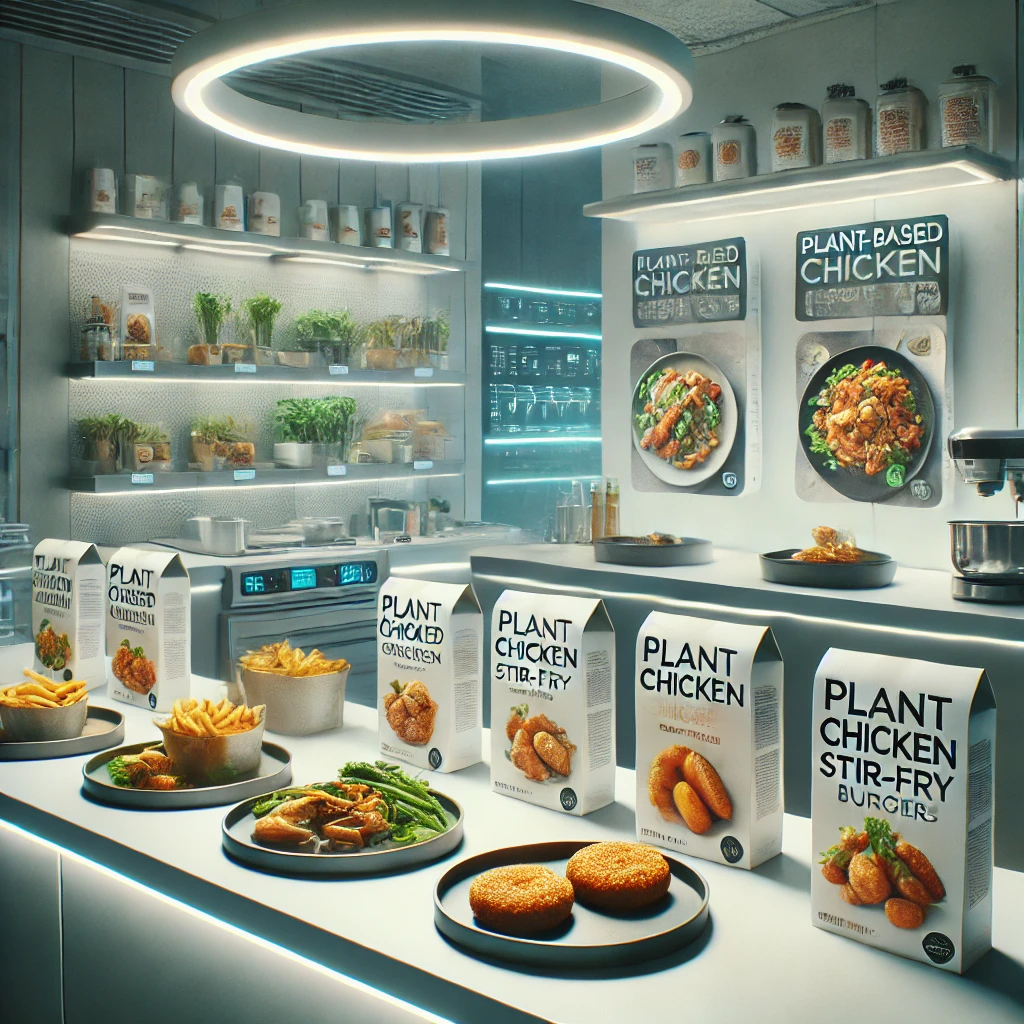
Innovation and Product Development
The plant-based food industry is rapidly evolving, with ongoing innovation leading to even more realistic and versatile plant-based chicken products. As technology advances, we can expect future products to better mimic the texture, flavor, and cooking experience of traditional chicken. This will likely make plant-based chicken even more appealing to a broader audience.
Mainstream Adoption
As more people recognize the benefits of plant-based eating, the adoption of plant-based chicken in American homes is expected to grow. This trend is supported by the increasing availability of these products in grocery stores and restaurants, as well as by the growing body of evidence highlighting the health and environmental benefits of reducing meat consumption.
Free Guide Promotion (Final Call to Action): If you’re ready to explore the benefits of plant-based eating and incorporate more sustainable, healthy meals into your diet, download our free guide, “The Global Healthy Eating Guide: Flexitarian Meals, Superfoods, and Fusion Recipes.” This guide is designed to help you make the transition to a plant-based diet with ease, offering practical tips, delicious recipes, and a 7-day meal plan. Download your free guide today and start cooking healthier, more sustainable meals!
Embrace the Future of Sustainable Eating with Plant-Based Chicken

The rise of plant-based chicken in American homes reflects a broader shift toward more sustainable and health-conscious eating habits. As more people become aware of the environmental impact of traditional meat production and the health benefits of plant-based diets, plant-based chicken offers a compelling alternative that doesn’t sacrifice taste or convenience.
Whether you’re a seasoned plant-based eater or just starting to explore the possibilities, incorporating plant-based chicken into your diet is a simple way to enjoy your favorite meals while supporting your health and the planet. With the growing variety of products available, it’s easier than ever to make the switch.
Affiliate Product Summary:
- Cast Iron Skillet: Ideal for achieving a perfect sear on your plant-based chicken.
- Non-Stick Grill Pan: Grill your plant-based chicken without the mess.
- Reusable Silicone Food Storage Bags: Store your ingredients and leftovers sustainably.
- Bamboo Cutting Board: A durable and eco-friendly cutting board for all your kitchen prep.
By embracing plant-based chicken and other plant-based foods, you can make a positive impact on your health, the environment, and animal welfare. So why not start today? With the help of our free guide and the right kitchen tools, you’ll be well on your way to enjoying delicious, sustainable meals that benefit both you and the planet.



Leave a Reply